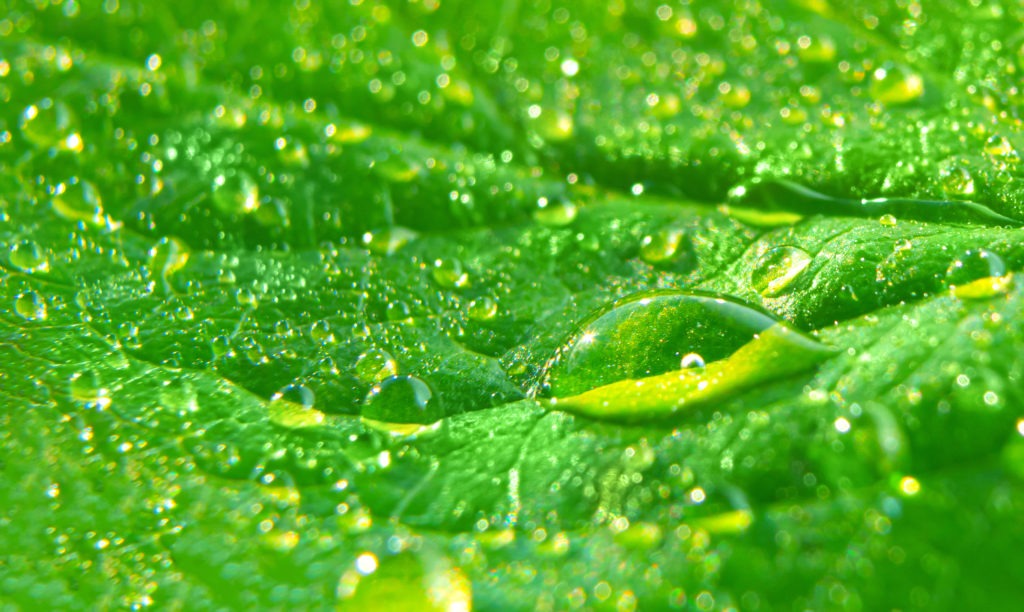
Parental Note: This experiment is geared towards ages 9 and up to be completed independently. The project may require some support to gather materials, use a hole punch and mix solutions.
Additional Note: This experiment will take roughly 1 hour to complete; this calculation takes into consideration both setup time and the time needed to collect and analyze data.
Experiment Overview:
Photosynthesis is the process through which plants use energy from the sun to turn water, carbon dioxide, and minerals into glucose (food) and oxygen. This process is so important to life on Earth! Not only do animals eat plants, but they also breathe in the oxygen produced by the plants. When the animals exhale, they provide carbon dioxide in return that can be used by the plants for more photosynthesis. Humans have also found ways to mimic the natural process of photosynthesis to create a renewable type of fuel – plant power!
In this exercise, you will observe the photosynthesis process taking place in spinach leaves. You will provide the spinach with carbon dioxide and light, and observe how the leaves release tiny oxygen bubbles.
Experiment Materials:
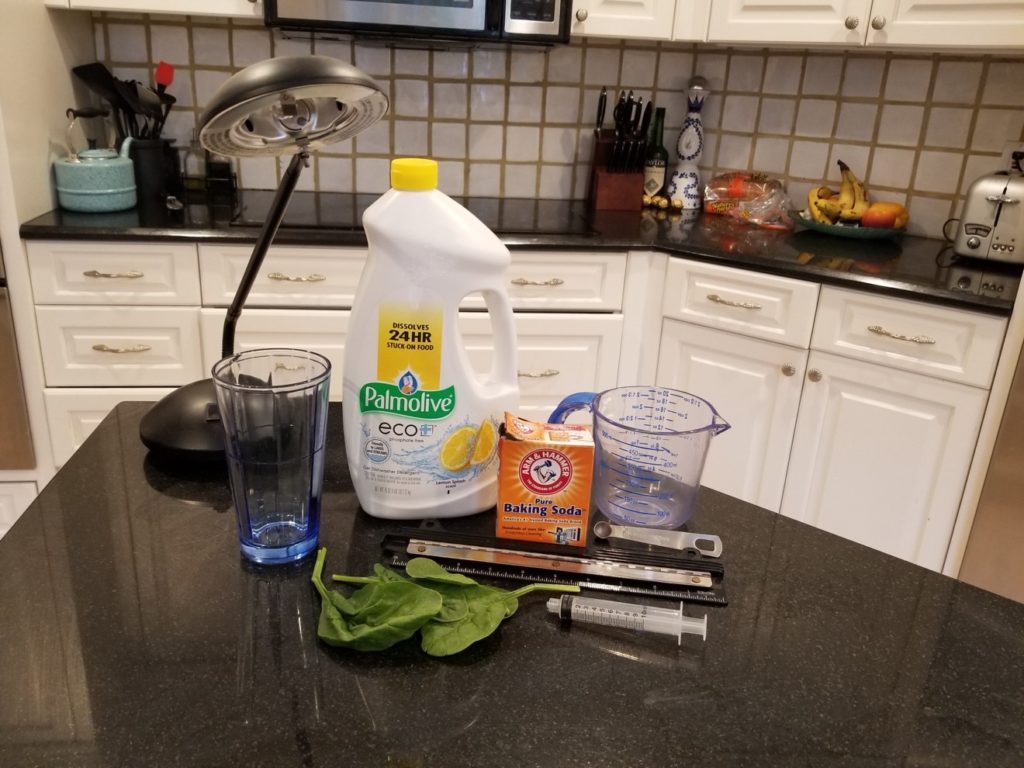
- fresh spinach leaves
- hole puncher (or can use hard plastic straw)
- baking soda (sodium bicarbonate)
- liquid dishwashing detergent (only need a drop)
- 1 plastic syringe (no needle, 10 mL or larger)
- 2 clear cups
- 1 measuring cup
- 1 measuring spoon (1/8 teaspoon)
- light source (natural sunlight works, or you can use an artificial light)
Experiment Process:
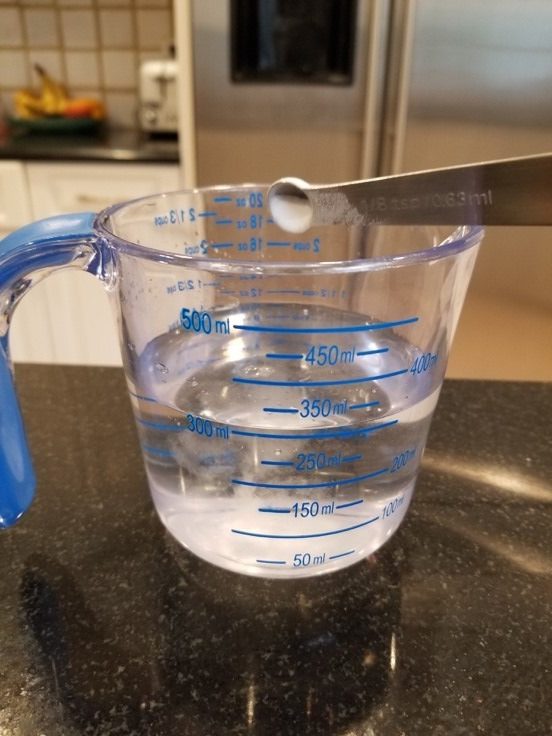
Step 1
Use a measuring spoon to scoop out 1/8 teaspoon of baking soda, and fill your measuring cup with 300 milliliters of water. Mix the baking soda into the water to create your bicarbonate solution. When the baking soda dissolves in the water, it releases carbon dioxide. This will be used by the spinach for photosynthesis. Pour this solution into any cup and set aside.
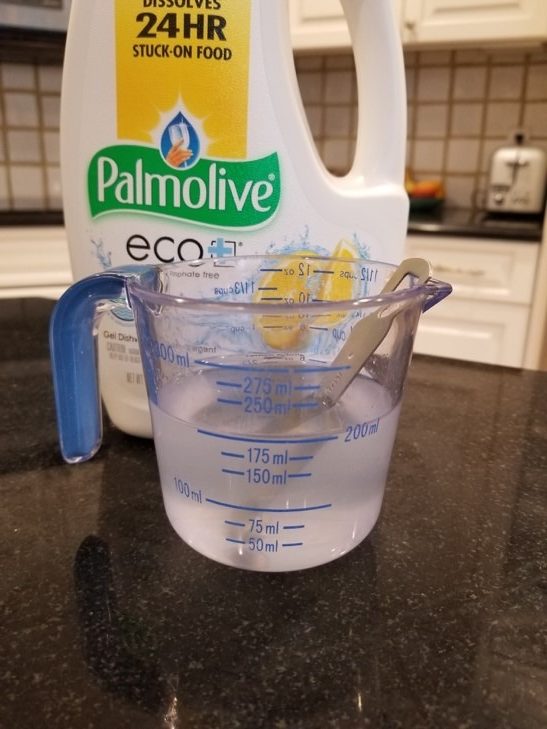
Step 2
Fill your clean measuring cup with 200 milliliters of water and add a drop of liquid dishwashing detergent to create a detergent solution.
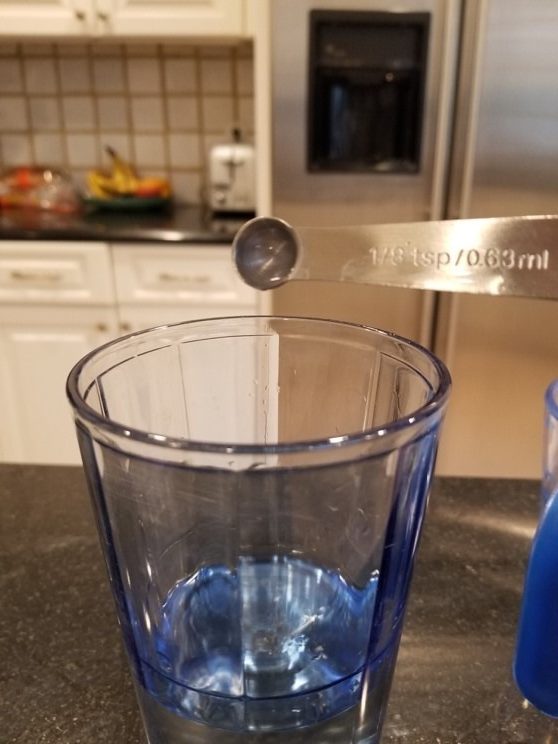
Step 3
Pour half (150mL) of your bicarbonate solution into a clear cup. Place a drop of the detergent solution into the bicarbonate solution. Make sure there is no suds. If you see bubbles, continue adding small amounts of the bicarbonate solution to the cup until the bubbles are gone.
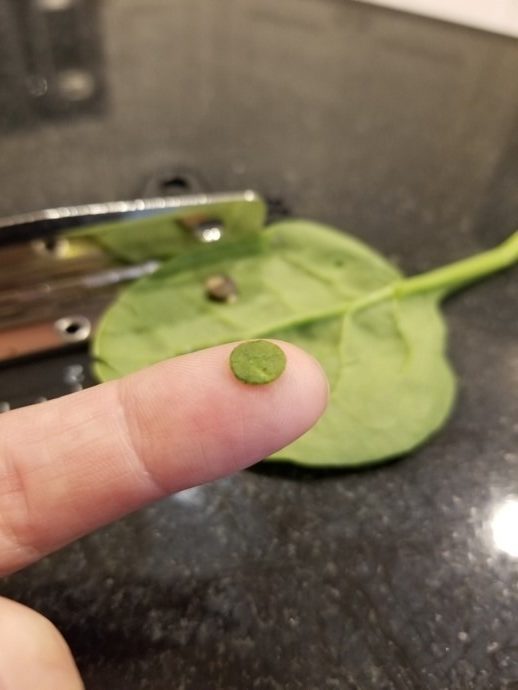
Step 4
Using the hole punch, create 10 – 20 discs from the spinach leaves. Only punch holes in smooth, flat areas and do your best to avoid large veins or the edges of the leaf.
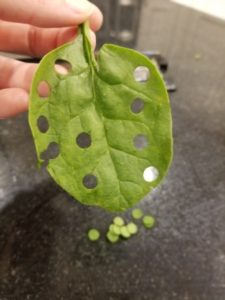
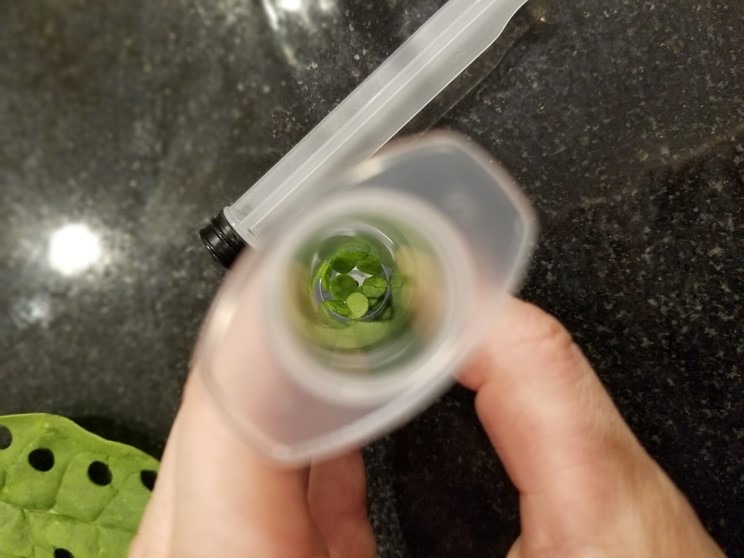
Step 5
Remove the plunger from the syringe and add the discs into the syringe.
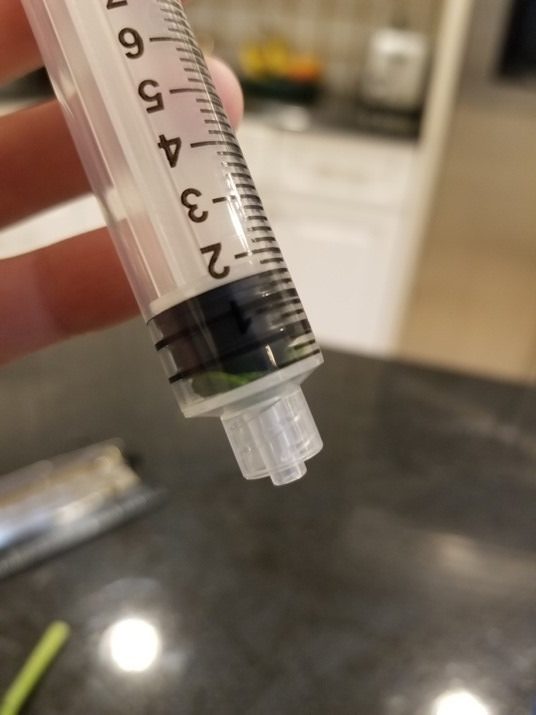
Step 6
Put the plunger back into the syringe and slowly depress it to expel as much air as you can without crushing the leaves.
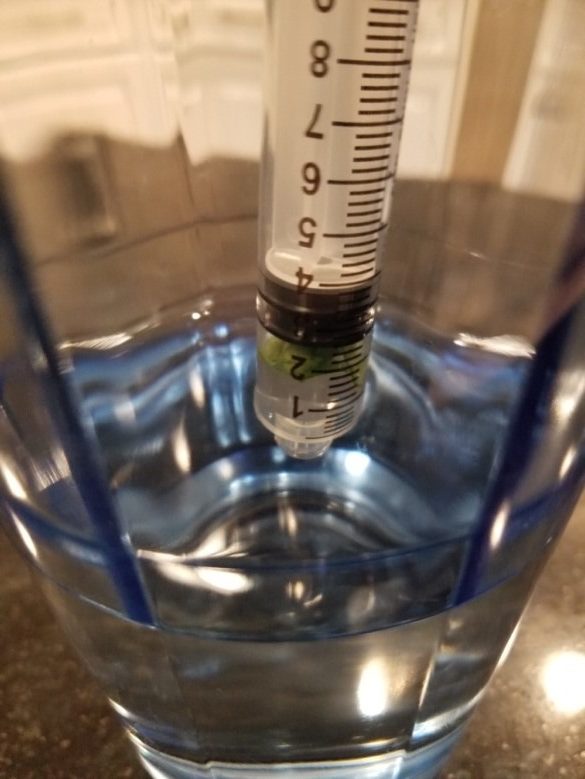
Step 7
Dip the tip of the syringe in the bicarbonate/detergent mixture and pull in about 3 mL of liquid. Gently tap the syringe to suspend the leaves in the solution.
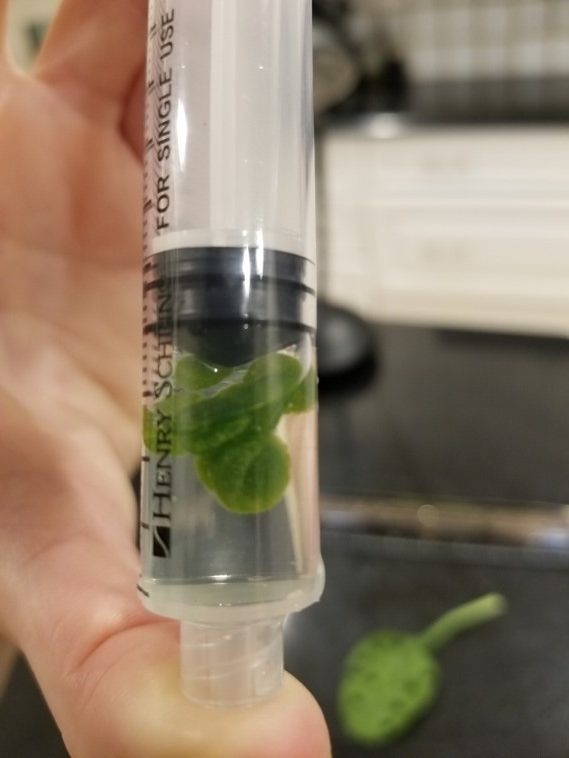
Step 8
Next, place your finger over the end of the syringe and pull back on the plunger to create a vacuum.
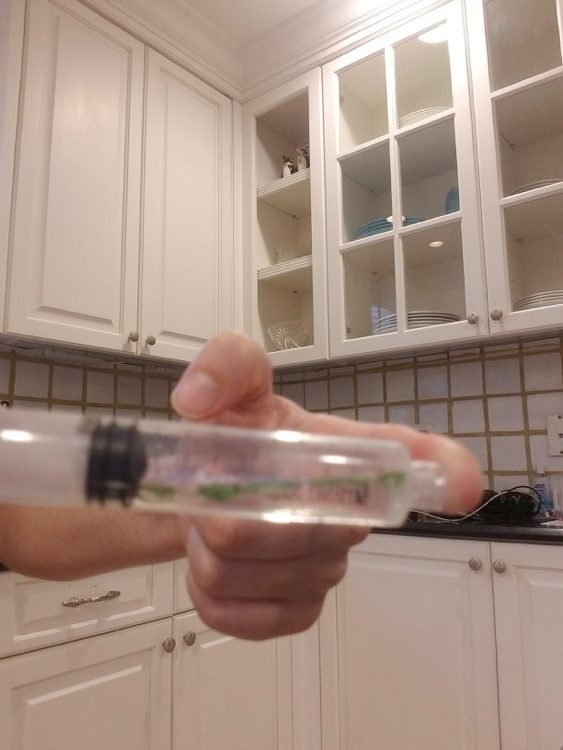
Step 9
While keeping your finger over the tip to maintain the vacuum, swirl the leaf disks in the syringe. After 10 seconds, remove your finger to release the vacuum.
Step 10
Repeat steps 8 and 9 to make sure the leaves take up the carbon dioxide. You should observe the discs sinking to the bottom of the syringe. If this does not happen, you may need to start over using fresh discs and new solution that has more baking soda.
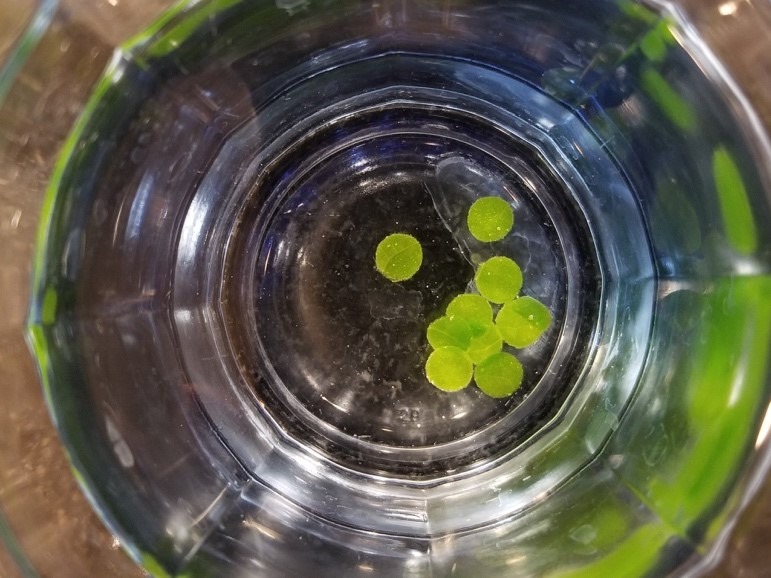
Step 11
Pour the discs into the cup with the bicarbonate/detergent mixture and watch them sink to the bottom. Make sure they don’t stick to the sides of the cup.
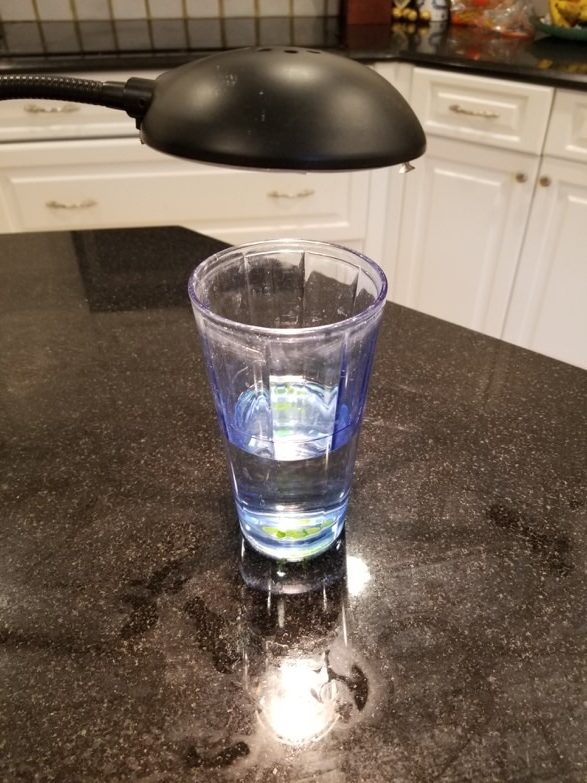
step 12
Expose the cup to natural sunlight or artificial light source for several minutes. Observe and write down what happens as the spinach discs perform photosynthesis and give off oxygen.
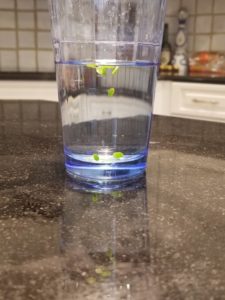
Conclusions:
Share Your Results:
- What happened to the spinach discs as they gave off oxygen from photosynthesis?
- What happens to the spinach discs when you turn off the light source?
- What three things did you give the spinach leaves for them to perform photosynthesis?
Conclusions:
During photosynthesis, plants use carbon dioxide, water and sunlight to make food and they also give off oxygen as a result. Without photosynthesis, life, as we know it on this planet, would not exist. You observed the reaction taking place before your eyes with the spinach leaves. You probably noticed that it didn’t take long before turning on the light to start seeing the reaction take place. All it took was a handful of ingredients and a few minutes and suddenly you had a fast and efficient conversion of energy. This conversion of energy could one day be used by humans to power things like automobiles!
Extension:
Extension
You can take this a step further by experimenting with different types of leaves from around your house. Design an experiment to see if certain leaves release more oxygen than others. Remember, this works best with broad, flat leaves and make sure to avoid punching holes from areas with large veins.









